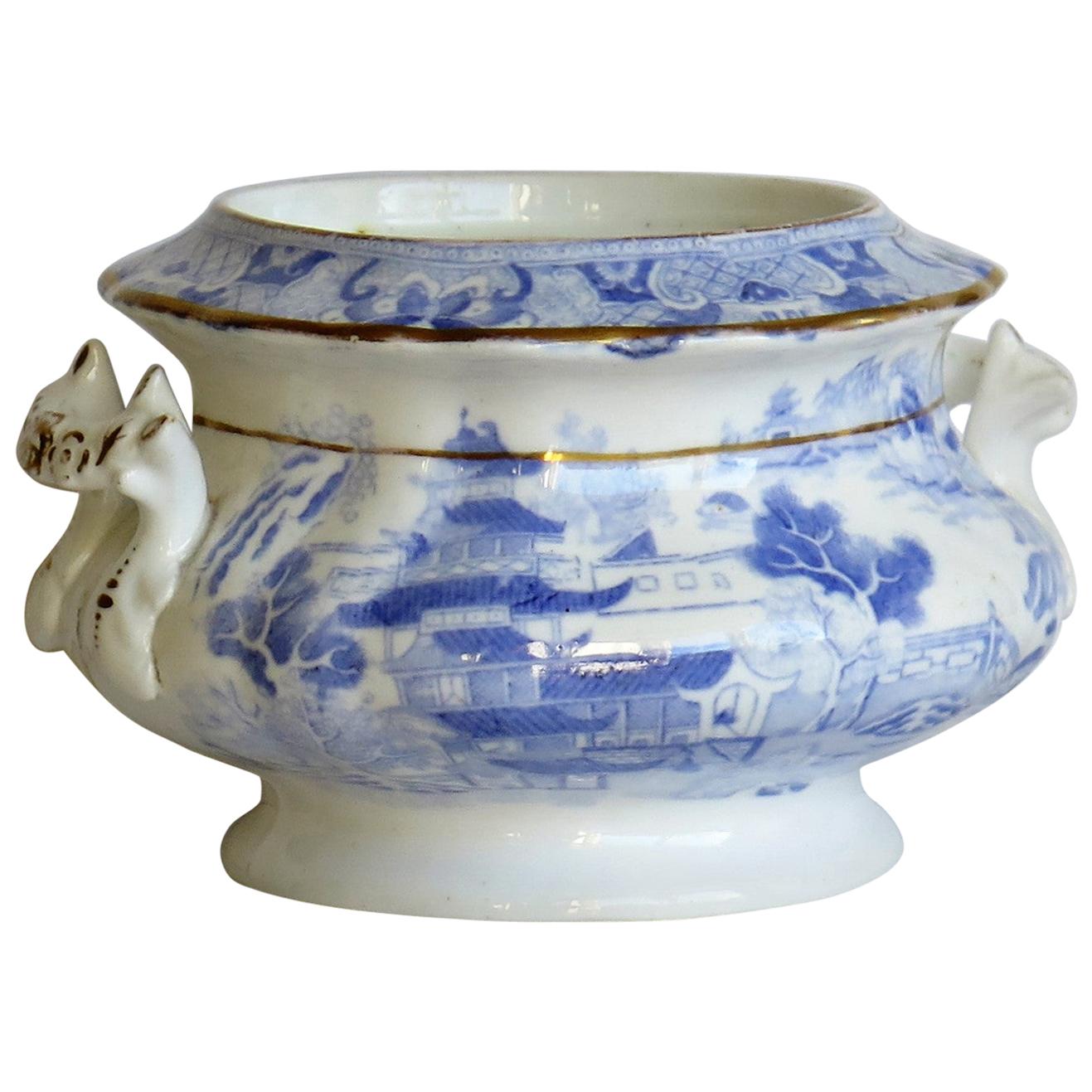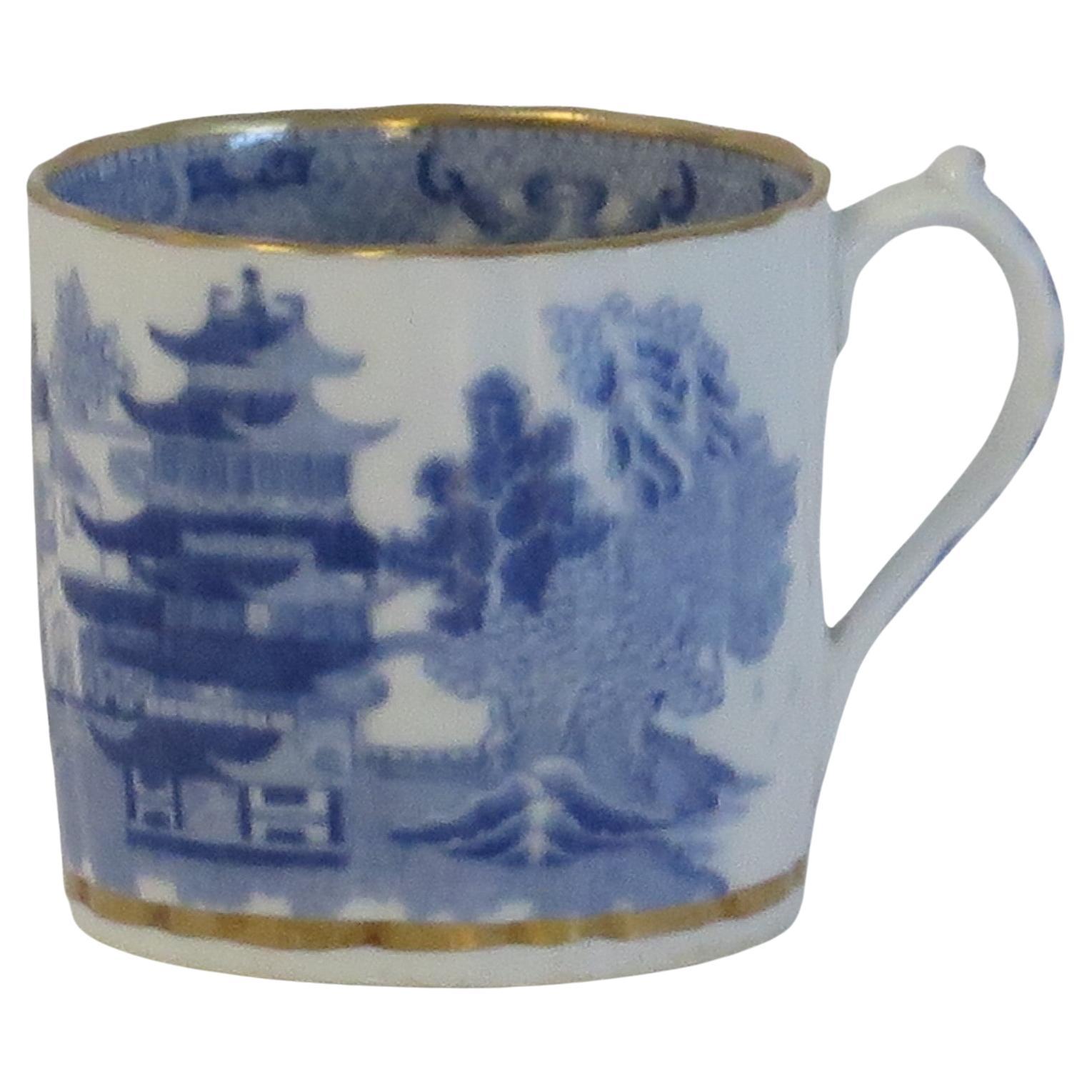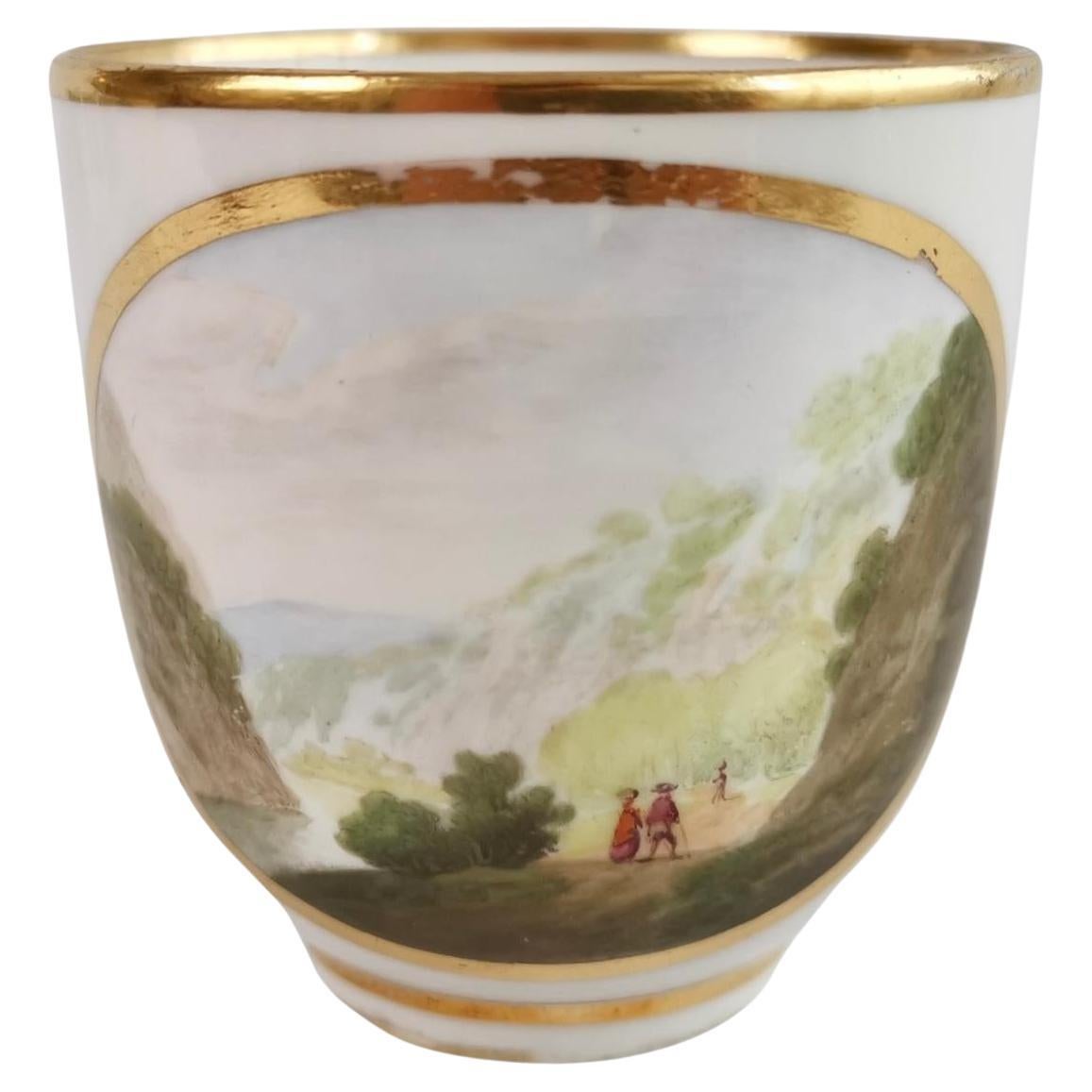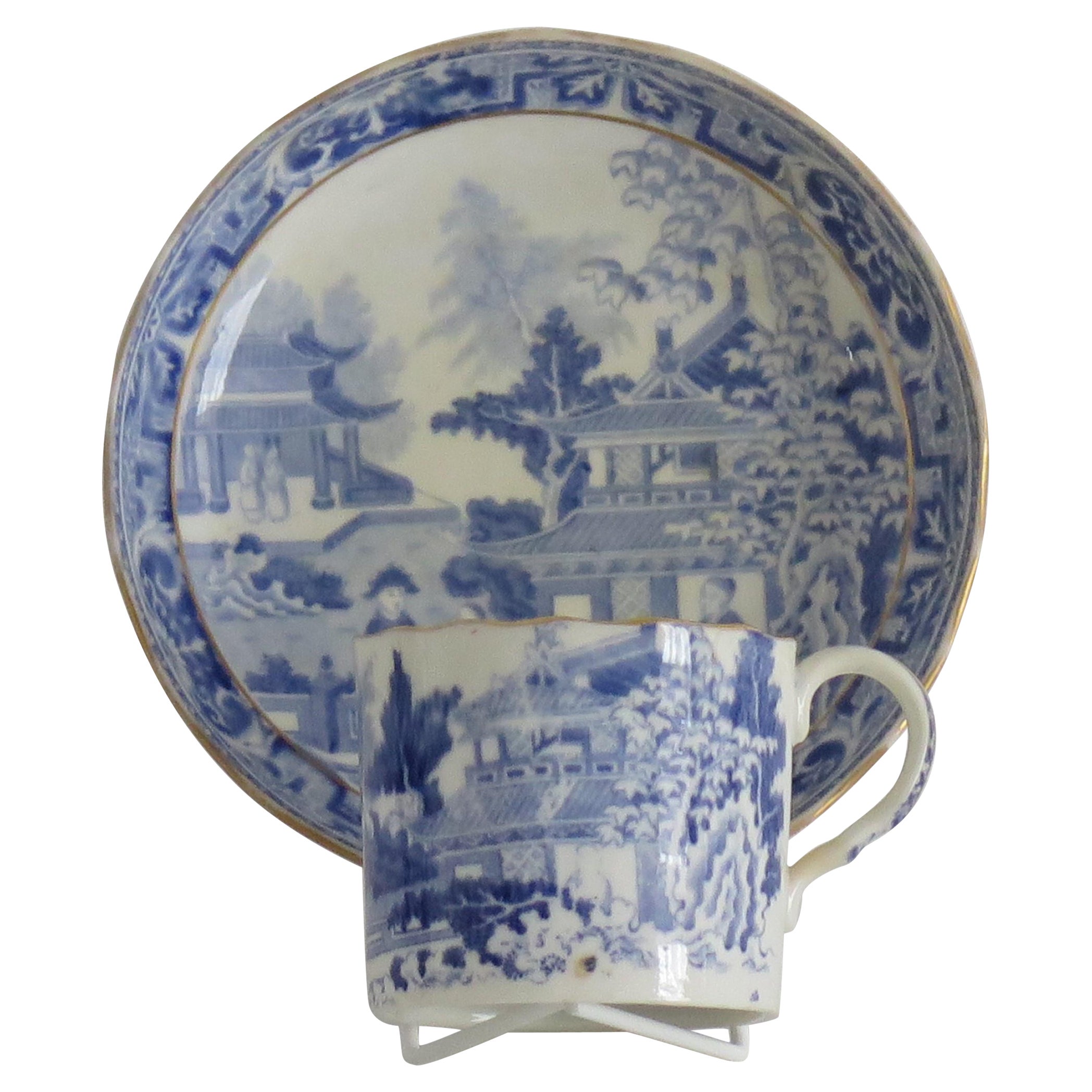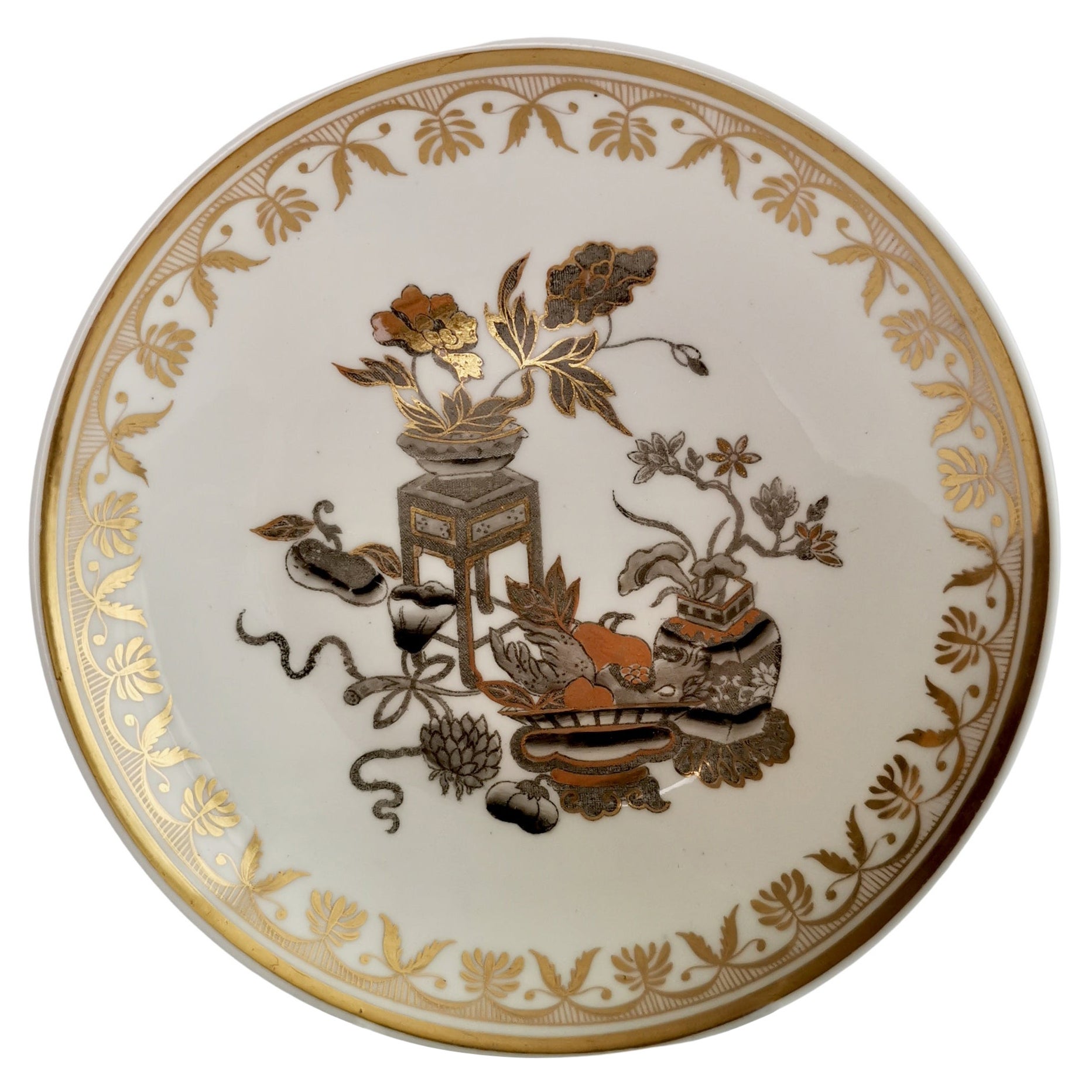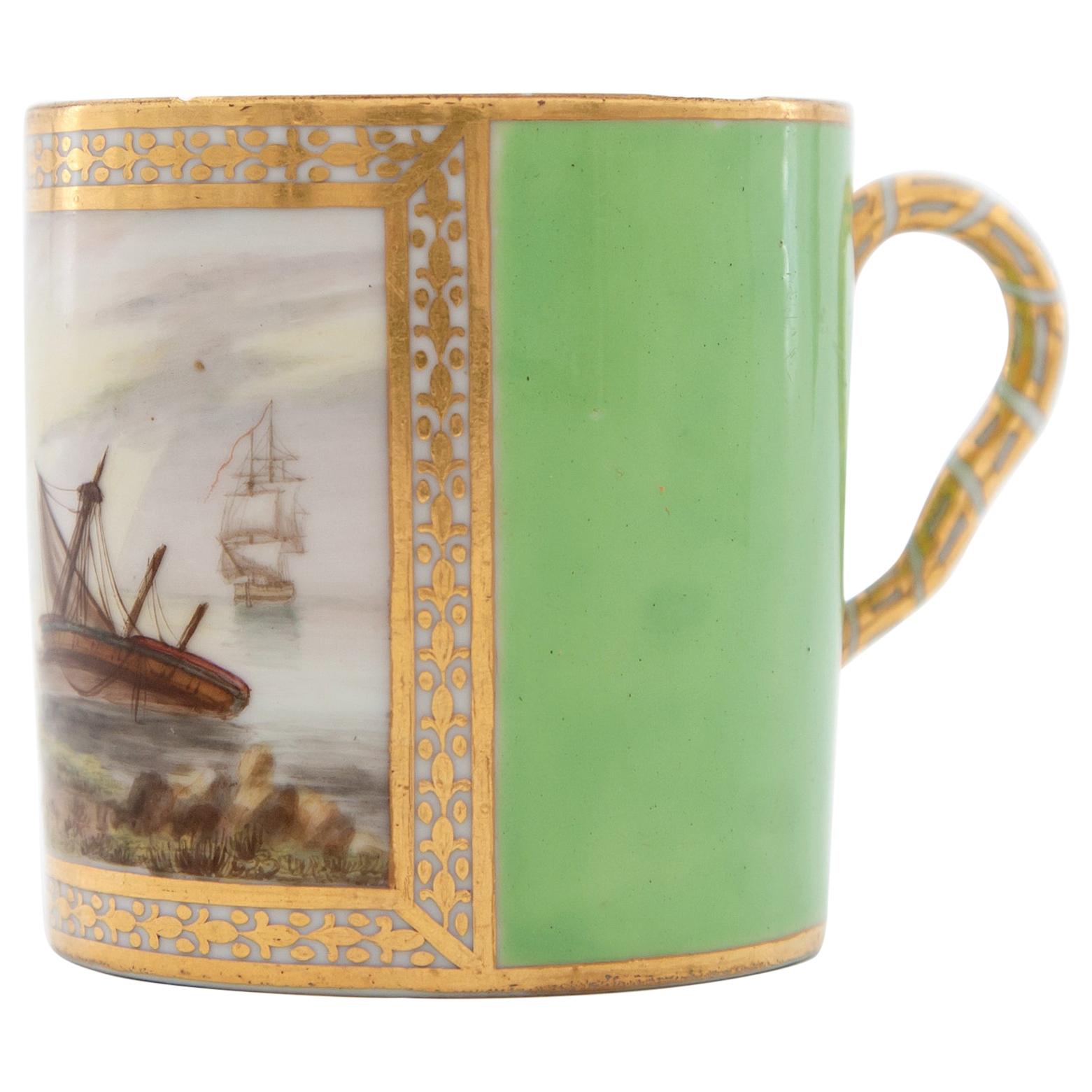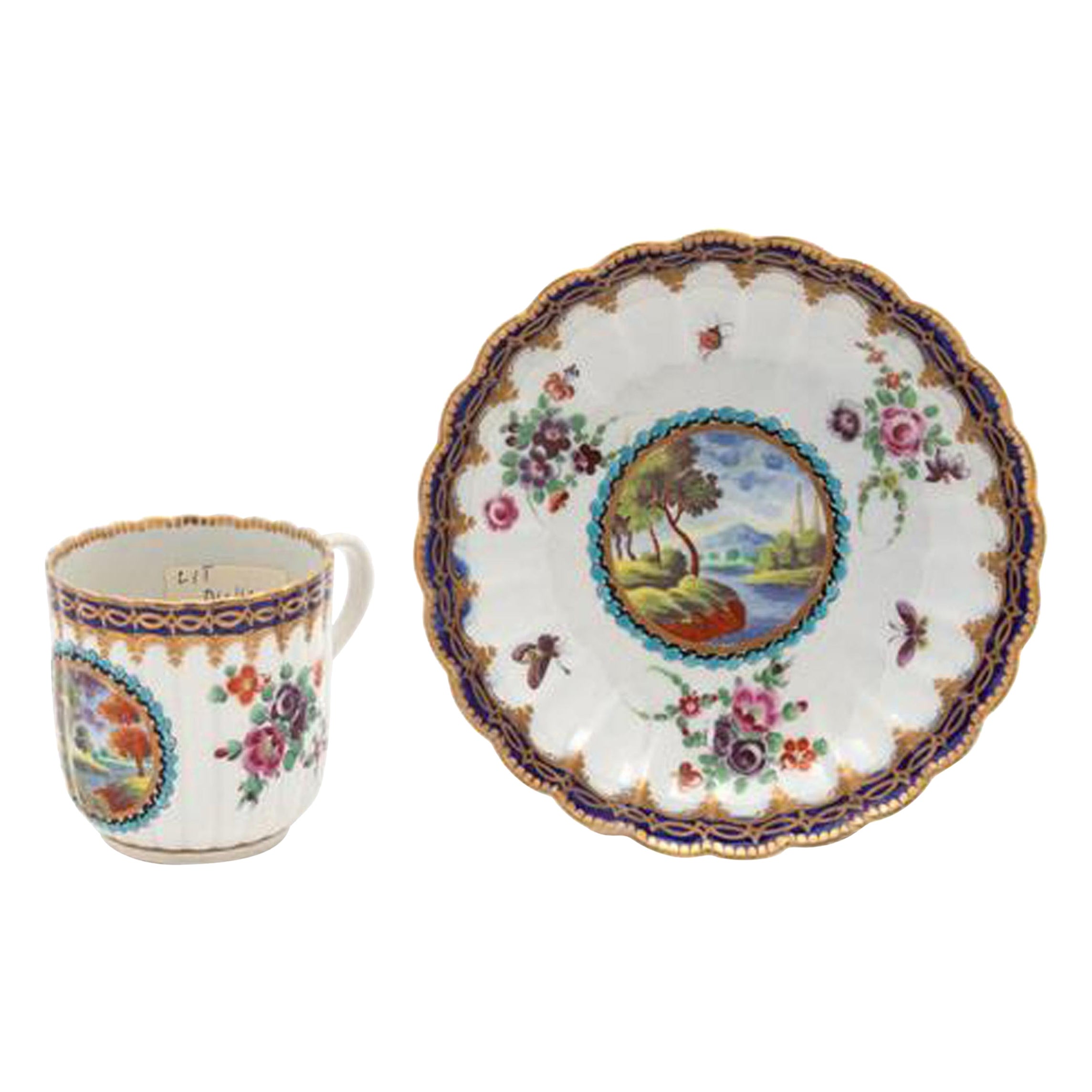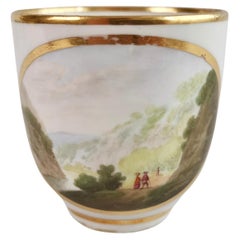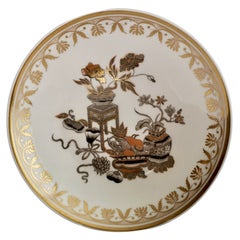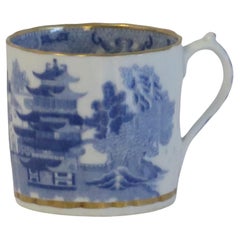
Miles Mason Orphaned Porcelain Coffee Can, White, Bat Printed Minerva
View Similar Items
Want more images or videos?
Request additional images or videos from the seller
1 of 13
Miles Mason Orphaned Porcelain Coffee Can, White, Bat Printed Minerva
About the Item
- Creator:Miles Mason Porcelain (Maker)
- Dimensions:Height: 2.6 in (6.61 cm)Diameter: 2.6 in (6.61 cm)Length: 2.6 in (6.61 cm)
- Style:Regency (Of the Period)
- Materials and Techniques:
- Place of Origin:
- Period:
- Date of Manufacture:circa 1810
- Condition:Wear consistent with age and use. In excellent antique condition.
- Seller Location:London, GB
- Reference Number:Seller: A-MAS161stDibs: LU4805121884252
About the Seller
5.0
Gold Seller
These expertly vetted sellers are highly rated and consistently exceed customer expectations.
Established in 2016
1stDibs seller since 2019
208 sales on 1stDibs
Typical response time: 1 hour
More From This SellerView All
- Derby Orphaned Coffee Can, White, Landscape by Zachariah Boreman, ca 1790By DerbyLocated in London, GBThis is a very rare and stunning little orphaned coffeecup made by Derby in about 1790. The cup has a white ground, simple gilt rims and a stunning named mountain landscape painted by Zachariah Boreman. The Derby factory, later reshaped into Royal Crown Derby, is currently the oldest British porcelain factory still in production. Derby was one of the most prominent potteries right from the start of English porcelain production in the mid 1700s to today. Their items are of exceptionally high quality and many of the designs have become iconic, particularly the Imari designs; many of these are still being made today. Derby made many exciting designs in the Regency era, and this cup, which would have belonged to a large tea service, is a beautiful example. The marking at the underside indicates that the cup was produced some time between 1782 and 1800, however the style is from the mid-1790s. Zachariah Boreman was one of the most celebrated painters at Derby. He arrived at Derby around 1774 after working at Chelsea, and remained until 1794, when he left in frustration with Michale Kean, the owner. Even though Boreman became one of the prime landscape painters at Derby, Kean would not pay him more and this caused Boreman to go back to London and work for the Simms decorating studio. Boreman was most probably influenced by Paul Sandby, the chief drawing...Category
Antique 1790s English Georgian Tea Sets
MaterialsPorcelain
- Bow Porcelain Orphaned Coffee Cup, Famille Rose Peony, circa 1755By Bow PorcelainLocated in London, GBThis is a very charming orphaned coffee cup made by the Bow Porcelain factory in about 1755. The cup is decorated in a Chinese "famille rose" peony pattern. This cup would have been part of a large tea service, and the tiny size shows how expensive coffee was in the 18th Century. The Bow Porcelain Factory was one of the first potteries in Britain to make soft paste porcelain, and most probably the very first to use bone ash, which later got perfected by Josiah Spode to what is now the universally used "bone china". Bow was the main competitor of the Chelsea Porcelain Factory, but where Chelsea made very fine slipcast porcelain, Bow made a different soft paste porcelain that tended to be softer and could be pressed into moulds. Bow served a larger public generally at lower prices. The factory was only in operation between 1743 and 1774, after which the tradition got incorporated into some of the later famous potteries such as Worcester and Derby. The cup is unmarked, which is normal for Bow items of this era. Condition report the cup is in excellent condition without any damage or repairs. There are various glazing imperfections, which are quite normal for porcelain of this era. Antique British porcelain...Category
Antique 1750s English Rococo Tea Sets
MaterialsPorcelain
- Spode Orphaned Porcelain Saucer, Chinoiserie Gilt Potted Flowers, Regency ca1820By SpodeLocated in London, GBThis is a beautiful deep orphaned saucer made by Spode around 1820. The saucer is decorated with a gorgeous Chinoiserie pattern of a group of potted flowers in gilt and grey. The sau...Category
Antique 1820s English Regency Porcelain
MaterialsPorcelain
$200 Sale Price20% OffFree Shipping - C.J.Mason Porcelain Coffee Cup, Chinoiserie Birds Red and Gilt, ca 1830By C.J. Mason 1Located in London, GBThis is a beautiful coffee cup and saucer made by C J Mason around 1830, which was the George IV era. The items are decorated with beautiful transfer printed birds and Chinoiserie de...Category
Antique 1830s English George IV Porcelain
MaterialsPorcelain
$204 Sale Price / set20% OffFree Shipping - Coffee Can, Flight Barr & Barr, Peach Gilt Strawberries, Regency, circa 1815By Flight, Barr & Barr WorcesterLocated in London, GBThis is a beautiful coffee can and saucer made by Flight, Barr & Barr between 1813 and 1840, but most probably, circa 1815. It has a peach ground with a very charming gilt strawberry...Category
Antique 1810s English Regency Tea Sets
MaterialsPorcelain
$336 Sale Price / set20% OffFree Shipping - Chamberlains Worcester Orphaned Coffee Cup, Sepia Flower Sprays, Georgian ca1795By Chamberlains WorcesterLocated in London, GBThis is a beautiful orphaned coffee cup made by Chamberlains Worcester in about 1795. The cup has a spirally fluted or shanked shape and is decorated...Category
Antique 1790s English George III Tea Sets
MaterialsPorcelain
$200 Sale Price20% OffFree Shipping
You May Also Like
- Miles Mason Porcelain Coffee Can Blue & White Broseley Gilded Ptn 50, circa 1808By Miles Mason PorcelainLocated in Lincoln, LincolnshireThis is a porcelain blue and white, gilded Coffee Can made by Miles Mason (Mason's), Staffordshire Potteries, in the early 19th century George 111rd period, circa 1805-1810. The piece is well potted with vertical flutes, a slightly wavy rim and the loop handle with the distinctive thumb rest spur. The can is decorated in the under-glaze blue printed Pagoda or Broseley, chinoiserie Willow pattern, (sometimes called Boy at the Door pattern). The piece is also richly gilded in Miles Mason pattern 50 as illustrated on Page 78 of the book; Miles Mason Patterns and Shapes, produced by the Mason's Collectors' Club. The coffee can is also hand gilded around the rims and on the outer handle. The piece is fully marked to the base with an under-glaze blue printed square seal mark (pseudo Chinese) as illustrated on page 92 of the above publication. Overall a very good Georgian coffee can...Category
Antique Early 19th Century English Chinoiserie Ceramics
MaterialsPorcelain
- Miles Mason Coffee Can & Saucer Porcelain Chinamen on Verandah Pattern, Ca 1805By Miles Mason PorcelainLocated in Lincoln, LincolnshireThis is a Miles Mason Duo of two pieces of blue and white hand gilded porcelain comprising a coffee can and a saucer, all in the Chinaman on Verandah pattern, made by Miles Mason (Ma...Category
Antique Early 19th Century English Chinoiserie Porcelain
MaterialsPorcelain
- Georgian Miles Mason Coffee Can & Saucer Porcelain Hand Gilded Ptn C13, ca 1805By Miles Mason PorcelainLocated in Lincoln, LincolnshireThis is a fine porcelain coffee can & saucer duo made by Miles Mason, of Lane Delph, Stoke on Trent, England, circa 1805. It has a plain loop handle with the characteristic upper spu...Category
Antique Early 19th Century British Georgian Porcelain
MaterialsPorcelain
- Early Derby Porcelain Coffee Can att. to George Robertson, circa 1795By Derby, George RobertsonLocated in Fort Lauderdale, FLA green-ground porcelain coffee can made by the Derby Porcelain Factory circa 1795. This green-ground coffee can is a fine example of early Derby porcelain...Category
Antique 1790s English Georgian Porcelain
MaterialsPorcelain
$2,400 Sale Price25% Off - 18th Century First Period Worcester Porcelain Coffee Can and SaucerBy 1st Period Worcester Dr. WallLocated in Downingtown, PAFirst Period Worcester porcelain coffee can and saucer, circa 1772-1775 The fluted Worcester porcelain coffee can and saucer are finely painted with a central reserve with a land...Category
Antique 1770s Georgian Porcelain
MaterialsPorcelain
- Miles Mason Porcelain Sucrier Blue and White Broseley Willow Pattern, circa 1810By Miles Mason PorcelainLocated in Lincoln, LincolnshireThis is a porcelain blue and white, hand gilded Sucrier (Sugar Bowl) in the Broseley printed pattern made by Miles Mason (Mason's), Staffordshire Potteries, in the early 19th century, circa 1810. This piece is well potted with a lovely shape and twin side handles, but no lid. The sucrier is decorated in the under-glaze blue printed Pagoda or Broseley, chinoiserie Willow pattern, (sometimes called Boy at the Door pattern). There is hand gilded detail around the mid body, upper rim and on the handles. This piece is marked with the under-glaze printed mock Chinese seal...Category
Antique Early 19th Century English Chinoiserie Ceramics
MaterialsPorcelain
Recently Viewed
View AllMore Ways To Browse
Mason Vintage
Antique Chinese Porcelain Tea Set
Chinese Porcelain Tea Service
Tea Set Vintage White
Antique Chinese Coffee Sets
Antique China Coffee Sets
Antique England Etching
Set Of White Vintage Tea Set
Porcelain Antique Dessert Set
Antique Porcelain Coffee Set
Antique Porcelain Dessert Sets
Antique Porcelain Hand Painted Italian
Antique Vintage Coffee Set
Glass Bat
Large Porcelain Coffee Cup
Bone China Tea Sets
Large Silver Plate Tea Service
Antique Tea Service Porcelain
